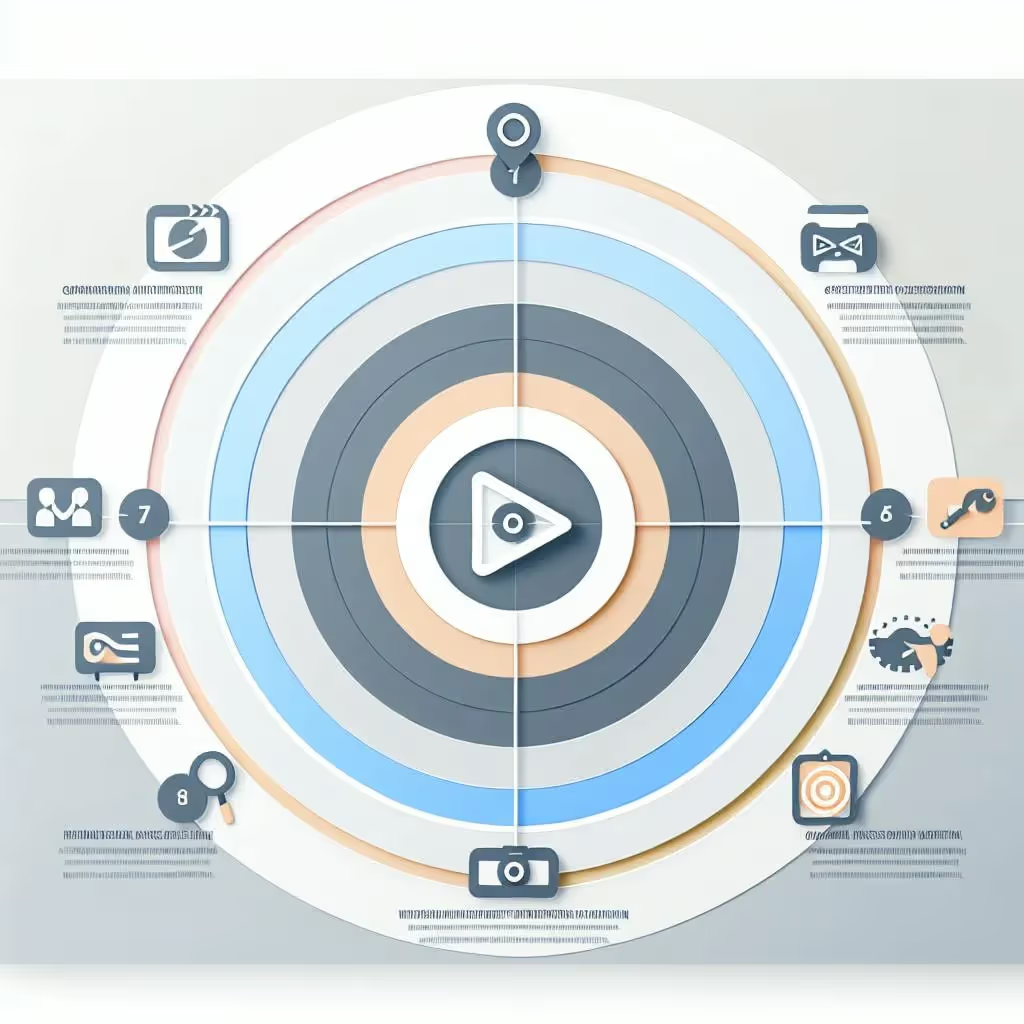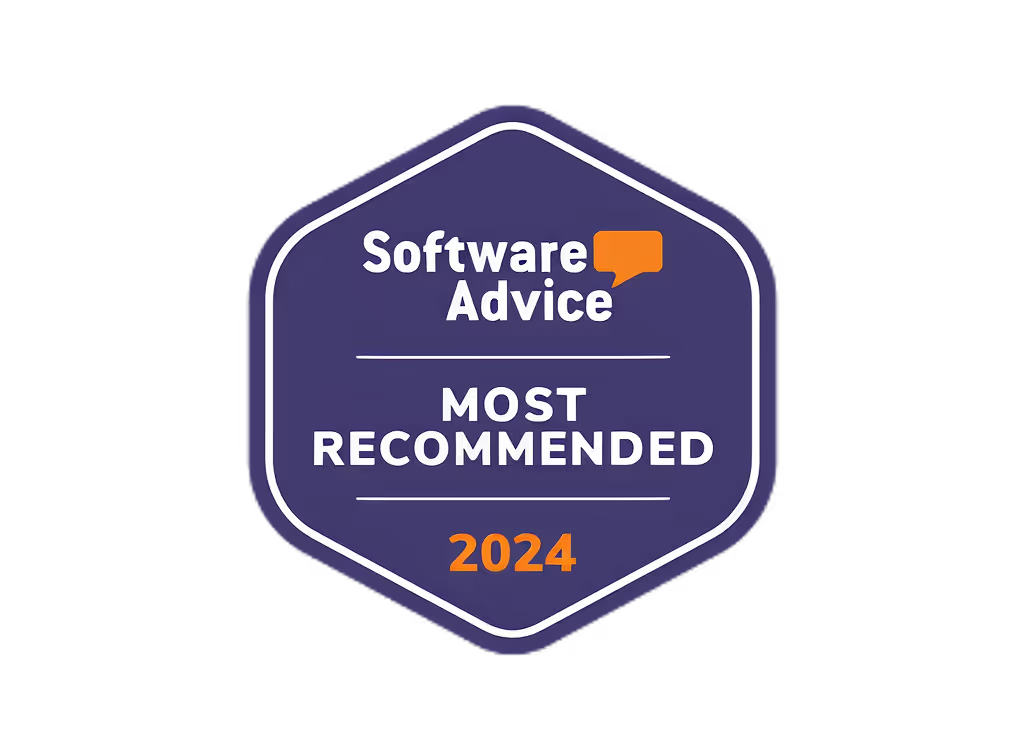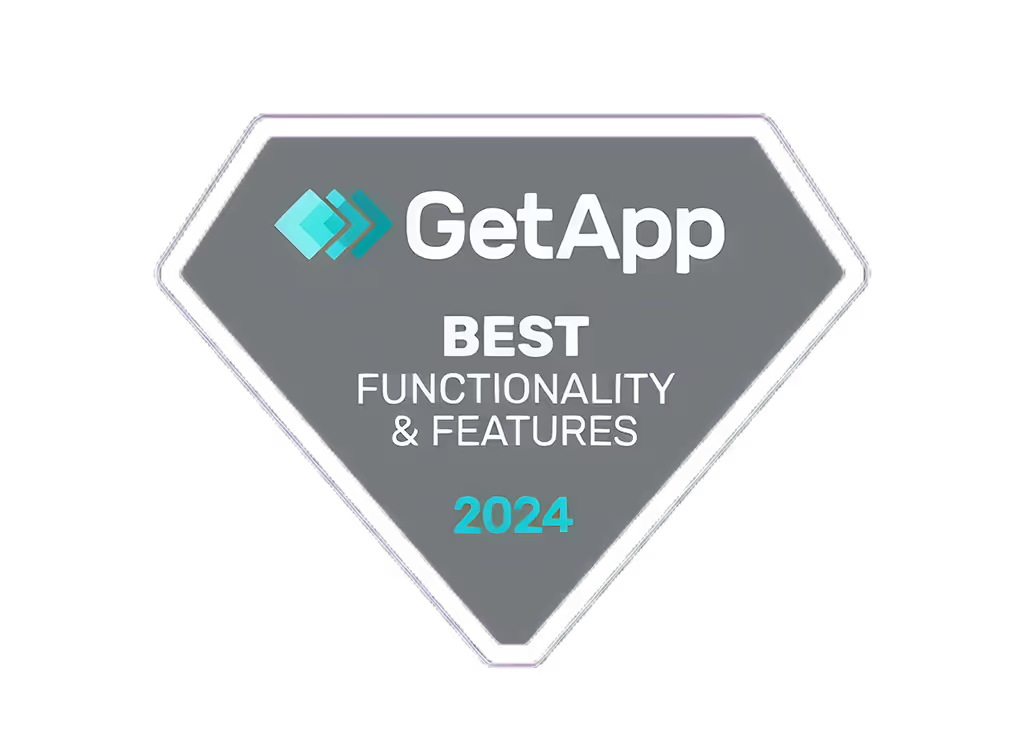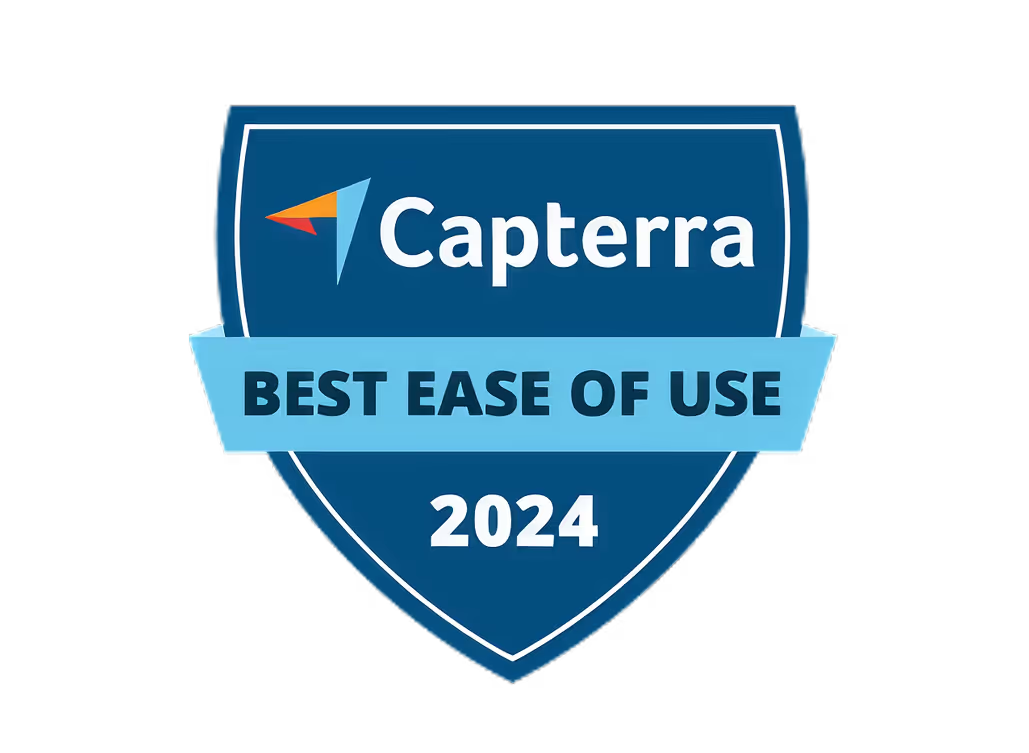Video Retargeting Campaign Checklist: 10 Steps

Setting up an effective video retargeting campaign involves following these key steps:
- Set Clear Campaign Goals
- Identify goals like brand awareness, lead generation, or driving sales
- Choose metrics to measure success (e.g., click-through rate, conversion rate, ROAS)
- Build Targeted Audience List
- Identify people who interacted with your brand (website visitors, video viewers, etc.)
- Segment audiences based on engagement, demographics, and behavior
- Connect Accounts
- Link your YouTube channel to your Google Ads account
- Connect other platforms like Facebook Ads Manager
- Set Budget and Bidding Strategy
- Allocate budget based on production costs, ad spend, tracking, etc.
- Choose bidding strategies like Target CPA or Target ROAS
- Create Video Campaign
- Select targeting options (demographics, custom audiences, lookalikes)
- Choose ad formats (in-stream, in-display, bumper ads, etc.)
- Prepare High-Quality Video Assets
- Ensure videos meet platform specifications (file type, aspect ratio, resolution) using AI clip generator
- Follow best practices for video production and optimization
- Set Up Conversion Tracking
- Create conversion actions in Google Ads
- Add conversion tracking tags to your website
- Track key conversions like form submissions, purchases, sign-ups
- Monitor Performance and Adjust
- Track metrics like conversion rate, click-through rate, view completion
- Adjust targeting, budget, and creative assets based on data
- Try Advanced Techniques
- Use dynamic remarketing to show personalized ads
- Leverage AI-powered video optimization tools
- Implement cross-channel retargeting
- Continuously Optimize
- Regularly review performance data
- A/B test different elements to improve results
- Stay updated with best practices and industry changes
Related video from YouTube
Quick Comparison: Engagement Metrics
Video Content TypeAverage Engagement RateExplainer videos2.5%Product demos3.2%Testimonials4.1%Animated videos2.1%
By following this 10-step checklist, you can create a successful video retargeting campaign that drives conversions and grows your business. Stay flexible, monitor performance, and continuously optimize for long-term success.
Set Campaign Goals
Identify the main goals of your retargeting campaign, such as brand awareness, conversions, or lead generation. Choose specific metrics to measure success, like click-through rate, conversion rate, or return on ad spend (ROAS). This will help you stay focused and optimize your campaign for better results.
For example, if your goal is to increase brand awareness, focus on metrics like view-through rate, engagement, or reach. If your goal is to drive conversions, track metrics like conversion rate, cost per conversion, or ROAS.
Clear goals will help you decide on the type of video content, targeting options, and bidding strategy. By setting SMART (Specific, Measurable, Achievable, Relevant, Time-bound) goals, you'll create a more effective video retargeting campaign.
Common Video Retargeting Goals
GoalMetrics to TrackIncrease website trafficClick-through rate, page viewsGenerate leads/conversionsConversion rate, cost per conversionBoost brand awarenessView-through rate, engagement, reachDrive sales/revenueSales volume, revenue, ROASImprove ROASReturn on ad spend, cost per acquisition
Having clear goals helps you create a campaign that drives real results for your business.
Build Audience List
To create a successful video retargeting campaign, you need to build a solid audience list. This involves identifying and segmenting your target audience based on their behavior, interests, and demographics. Here's how to do it:
Identifying Your Target Audience
Your target audience consists of people who have interacted with your brand in some way, such as visiting your website, watching your videos, or engaging with your social media content. You can use platform-specific methods to create retargeting audiences, such as:
- YouTube: Create a video retargeting audience based on video views, engagement, or demographics.
- Facebook: Build a custom audience based on website traffic, engagement, or customer lists.
Segmenting Your Audience
Segmenting your audience helps you tailor your messaging and targeting to specific groups of people. You can segment your audience based on:
- Engagement levels: Create separate audiences for people who have viewed your videos, engaged with your content, or abandoned their shopping carts.
- Demographics: Segment your audience by age, gender, location, or interests.
- Behavior: Create audiences based on specific behaviors, such as purchases, sign-ups, or downloads.
Connect Accounts
To set up a video retargeting campaign, you need to connect your YouTube channel to your Google Ads account. This lets you target specific audiences and track performance. Here's how:
Linking Your YouTube Channel to Google Ads

- Sign in to your Google Ads account.
- Click on the Tools icon and select Data manager.
- Click on Connect Product and select YouTube.
- Enter your YouTube channel URL or search for it.
- Click Next and follow the prompts to complete the process.
Connecting Other Platforms
You may also want to connect other platforms like Facebook Ads Manager or Instagram. This helps you target ads across multiple platforms and track their performance.
Note: Ensure you have the necessary permissions to link these platforms to your Google Ads account.
Set Budget
To make your video retargeting campaign successful, you need to set a budget that matches your goals. Consider these factors:
- Production costs: The cost of making high-quality videos.
- Distribution channels: The cost of running ads on platforms like YouTube and social media.
- Frequency and duration: The cost of running ads at different times and lengths.
- Tracking and analytics: The cost of tools to monitor your campaign's performance.
Bidding Strategies
Choose a bidding strategy to manage your spending:
Strategy DescriptionTarget CPA Set a target cost for each conversion. Google Ads adjusts bids to meet this target.Target ROASSet a target return on ad spend. Google Ads adjusts bids to meet this target.
Pro Tip: Start with a small budget and adjust based on your campaign's performance. This helps you spend wisely and get better results.
Create Video Campaign
To set up a video retargeting campaign, you need to create a video ad campaign on your chosen platform (e.g., Google Ads, Facebook Ads Manager). This involves selecting targeting options and ad formats.
Targeting Options
Define your target audience by considering:
- Demographics: Age, gender, location, interests, and behaviors.
- Custom audiences: People who have interacted with your brand, visited your website, or engaged with your content.
- Lookalike audiences: People similar to your existing customers or followers.
Ad Formats
Choose the ad format that fits your campaign goals:
Ad FormatDescriptionIn-stream adsPlay before, during, or after YouTube videos.In-display adsAppear in the right-hand sidebar of YouTube videos or on other websites.Bumper adsShort, non-skippable ads that play before YouTube videos.Video discovery adsAppear in YouTube search results and recommendations.
Pro Tip: Test different ad formats and targeting options to find what works best for your campaign.
Prepare Video Assets
Prepare high-quality video assets that clearly communicate your message and connect with your target audience. A well-made video can greatly improve your retargeting campaign.
Video File Requirements
Make sure your video files meet the specifications for your chosen platform. Here are some general guidelines:
PlatformFile TypeAspect RatioResolutionFile SizeYouTubeMP4, MOV, AVI16:9, 4:31080p, 720pUp to 128 GBFacebookMP4, MOV16:9, 1:11080p, 720pUp to 2.3 GBLinkedInMP416:9, 1:11080p, 720pUp to 200 MB
Best Practices for Video Production
- Keep it short: Attention spans are short, so keep your video brief and to the point.
- Use clear calls-to-action: Encourage viewers to take action by including clear CTAs in your video.
- Optimize for sound-off viewing: Many users watch videos with the sound off, so ensure your video is still engaging and understandable without audio.
- Avoid common mistakes: Steer clear of backlighting, background noise, and other common video production errors.
Optimize Video Content
Optimize your video content to connect with your audience and drive conversions. Follow these best practices:
Add Relevant Titles, Descriptions, and Tags
Use accurate titles and include relevant keywords in your descriptions and tags. This helps users find your video when searching for similar content.
Include Subtitles and Closed Captions
Add subtitles and closed captions to make your video accessible to users who watch without sound. This is especially important for mobile users.
Use Clear Calls-to-Action
Include clear calls-to-action (CTAs) to guide viewers on what to do next, such as visiting your website, signing up, or making a purchase.
Make It Mobile-Friendly
Ensure your video is optimized for mobile devices. Keep it short, engaging, and easy to watch on a small screen.
Set Up Conversion Tracking
Set up conversion tracking to measure how well your ads are doing. Use tracking pixels and custom audience lists where needed. This step helps you understand your campaign's performance and make data-driven decisions.
Steps to Set Up Conversion Tracking
- Create a Conversion Action in Google Ads:
- Sign in to your Google Ads account.
- Click on the Tools icon and select Conversions.
- Click the + button to create a new conversion action.
- Follow the prompts to set up your conversion action.
- Add the Conversion Tracking Tag to Your Website:
- After creating the conversion action, Google Ads will generate a tracking tag.
- Add this tag to your website's code, following the provided instructions.
Common Conversion Actions to Track
Conversion ActionDescriptionForm submissionsTrack when users fill out and submit forms on your site.Phone callsTrack calls made from your ads or website.PurchasesTrack completed sales transactions.DownloadsTrack when users download files or apps.Sign-upsTrack when users sign up for newsletters or accounts.
Using Google Tag Manager

You can also use Google Tag Manager to manage your conversion tracking tags. This tool helps you streamline the process and ensure your tags are set up correctly.
Monitor and Adjust
Regularly reviewing key metrics is crucial to the success of your video retargeting campaign. Monitor your campaign's performance data to identify areas that need improvement and adjust your targeting, budget, and creative assets accordingly.
Track Key Metrics
Track metrics such as conversion rate, click-through rate, view completion rate, and cost per view to gauge the performance of your campaign. Analyze these metrics to identify trends, patterns, and areas for improvement.
Adjust Targeting
Based on your campaign's performance data, adjust your targeting to optimize your ad spend. For example, if you find that your ads are performing well on a specific platform or demographic, increase your ad spend on that platform or demographic.
Optimize Creative Assets
Optimize your creative assets, such as video thumbnails, titles, and descriptions, to improve ad performance. A/B test different creative assets to determine which ones perform best.
Leverage A/B Testing
A/B testing is a powerful tool to optimize your video retargeting campaign. Test different variables, such as video length, intro text, and landing pages, to determine which ones drive better results.
Advanced Techniques
To improve your video retargeting campaign, try using advanced techniques like dynamic remarketing and AI-powered video optimization.
Dynamic Remarketing
Dynamic remarketing shows ads tailored to a user's specific actions on your site. For example, if someone leaves items in their cart, you can show them an ad with those exact products and a special offer to encourage them to complete the purchase.
Steps to Set Up Dynamic Remarketing:
- Create a Remarketing List: Identify users based on their interactions with your site.
- Use a Data Feed: Populate the ad with user-specific information using platforms like Google Ads.
AI-Powered Video Optimization
AI tools can analyze your video content and suggest improvements. These tools help you optimize:
- Video Length: Find the ideal length for engagement.
- Intro Text: Craft compelling opening lines.
- Thumbnail Images: Choose images that attract clicks.
Cross-Channel Retargeting
Cross-channel retargeting involves showing ads on multiple platforms and devices. This approach helps you reach users wherever they are, maximizing your ad spend and improving campaign performance.
Benefits of Cross-Channel Retargeting:
BenefitDescriptionWider ReachTarget users on various platforms like YouTube, Facebook, and Instagram.Consistent MessagingEnsure your message is consistent across all channels.Improved PerformanceIncrease the chances of conversions by reaching users multiple times.
Summary
Setting up a video retargeting campaign involves careful planning and execution. By following the 10-step checklist in this article, you can create a well-structured campaign that effectively reaches your target audience. Remember to regularly monitor and optimize your campaign for the best results.
Comparison Tables
When setting up a video retargeting campaign, it's important to consider different platforms, budget strategies, and engagement metrics. Here are some comparison tables to help you decide.
Platform Comparison
PlatformTarget AudienceAd FormatPricing ModelYouTube2 billion monthly usersVideo ads, display adsCost-per-view (CPV), cost-per-click (CPC)Facebook2.5 billion monthly usersVideo ads, display ads, carousel adsCost-per-click (CPC), cost-per-thousand impressions (CPM)Instagram1 billion active usersVideo ads, display ads, stories adsCost-per-click (CPC), cost-per-thousand impressions (CPM)
Budget Allocation
Campaign GoalBudget Allocation StrategyBrand Awareness60% for reach and frequency, 40% for engagementLead Generation70% for targeting and retargeting, 30% for conversion optimizationConversion Optimization80% for retargeting and lookalike targeting, 20% for prospecting
Engagement Metrics
Video Content TypeAverage Engagement RateExplainer videos2.5%Product demos3.2%Testimonials4.1%Animated videos2.1%
These tables give a clear overview of the different platforms, budget strategies, and engagement metrics to consider. By understanding each platform's strengths and allocating your budget wisely, you can get the best results from your campaign.
Conclusion
By following this 10-step checklist, you can create a successful video retargeting campaign that drives conversions and grows your business. Each step is important, so take your time and consider each element carefully.
From setting goals to monitoring and adjusting your campaign, every step helps you reach your target audience and achieve your goals. Stay updated with best practices and keep optimizing your campaign to maximize your ROI and stay ahead of the competition.
Don't hesitate to try new things. Video retargeting is always changing, and what works today might not work tomorrow. Stay flexible to achieve long-term success.
With the right strategy, video retargeting can be a powerful tool for driving conversions and growing your business. Start building your video retargeting campaign today and see the results for yourself!
FAQs
How to set up a remarketing campaign?
To set up a remarketing campaign, follow these steps:
- Tag Your Site: Use Google Tag Manager to tag your entire site. This helps create remarketing lists.
- Create Remarketing Lists: Identify users based on their interactions with your site.
- Set Bids and Formats: Choose your remarketing bids and ad formats.
- Adjust Campaign Restrictions: Modify your campaign's restrictions as needed.
- Expand Remarketing Lists: Continuously update and expand your remarketing lists.

















